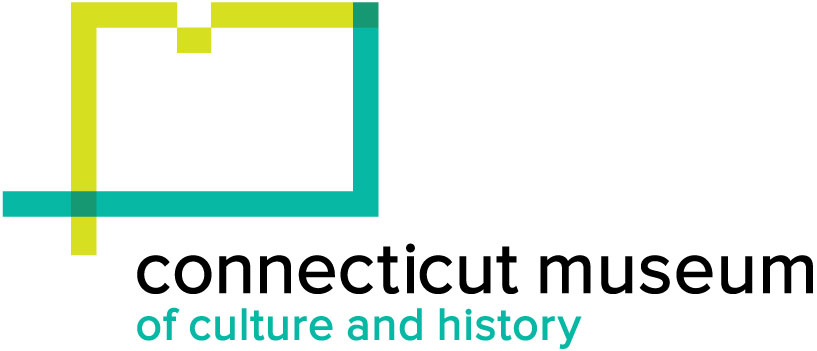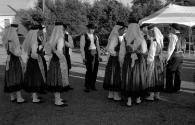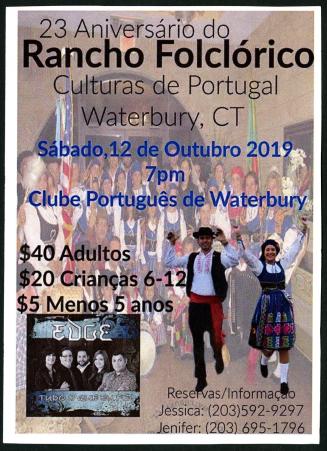Rancho Folclorico Portugal Canta e Danca
Date1997
Mediumnegative film strips
ClassificationsGraphics
Credit LineConnecticut Cultural Heritage Arts Program collections
CopyrightIn Copyright
Object number2015.196.336.1-.4
DescriptionImages of the Danbury-based Portuguese dance group Rancho Folclorico Portugal Canta e Danca competing at a festival in Taunton, Massachusetts in 1997.
2015.196.336.1-.4: Images showing members of the dance group wearing traditional folk clothing
NotesBiographical Note: Rancho Folclorico Portugal Canta e Danca is a dance group formed in 1997 and based at the Portuguese Cultural Center at the Immaculate Heart of Mary Church on Deer Hill Ave. in Danbury. Members of this group wear costumes that are all the same (as different from other dance groups where the costumes vary among the dancers), and may be from the Minho region of Portugal. One special feature is the lace apron, it may be that this area specializes in lace, embroidery, and hand work (bordados). They competed at this festival in Taunton and won first place for dance (beating out Hartford’s Rancho who were also competing).2015.196.336.1-.4: Images showing members of the dance group wearing traditional folk clothing
Subject Note: Connecticut residents of Portuguese descent number nearly 50,000; there is a Portuguese Consulate in Waterbury, signaling the importance of this ethnic group's presence throughout the state. Waterbury, Bridgeport, Hartford, Danbury and Stonington CT have sizeable Portuguese communities with different roots and cultural characters. Portuguese immigrants have come from mainland Portugal as well as the Azores and Madeira islands. Settling mainly in urban areas of Connecticut, they established churches, shops, restaurants and bakeries, and social clubs. Many Hartford Portuguese community members work in health care and hospitals. Those settling near the south coast of Connecticut work in maritime industries. Cultural heritage is maintained strongly in Portuguese communities, seen in many festivals – often religious celebrations with processions – continuing throughout the state. Stonington holds a summer Blessing of the Fleet and Holy Ghost Festival in August, Waterbury celebrates Festa de Sao Joao in June, Naugatuck has the San Paio Festival over Labor Day, Danbury holds the Festa do Senhor Santo Cristo dos Milagres and other events, the Holy Ghost Society in East Hartford hosts a festival on its grounds, and Hartford organizes the Festa do Divino Espiritu Santo, the Festa do Sao Joao and the Day of Portugal, and St Martin’s Day in November (commemorating the crop of chestnuts), among other events. In addition to churches, social clubs in the cities are community centers of language, sports, newspapers, cultural activities, foodways and festivals. For instance, the Portuguese Club of Hartford was founded in 1927. In 2017 the Club suffered a devastating fire and is in the process of rebuilding, but the membership remains strong with a young population.
Several Portuguese dance groups exist, most based at Portuguese clubs or churches in different Connecticut cities such as Hartford, Waterbury, Danbury, and Bridgeport. In Danbury, The Sons of Portugal Club formed in 1924, on Liberty St. The community grew with new immigrants, and the Portuguese Club was also built on Liberty St. Other businesses followed to the downtown area, which became known as Portugal Square or Little Portugal. In the late 1990s, the community had grown to the point where the two clubs decided to merge and form the Portuguese Cultural Center, which was built on Sand Pit Rd. The Center also formed a dance group, the Sons of Portugal Rancho Folk Dance Group, and The Sons of Portugal Marching Band.
Additional audio, video, and/or photographic materials exist in the archive relating to this community and these events.
Cataloging Note: This project was made possible in part by the Institute of Museum and Library Services MA-245929-OMS-20.
Status
Not on viewHaris Gusta Guya
2011 November 4

















